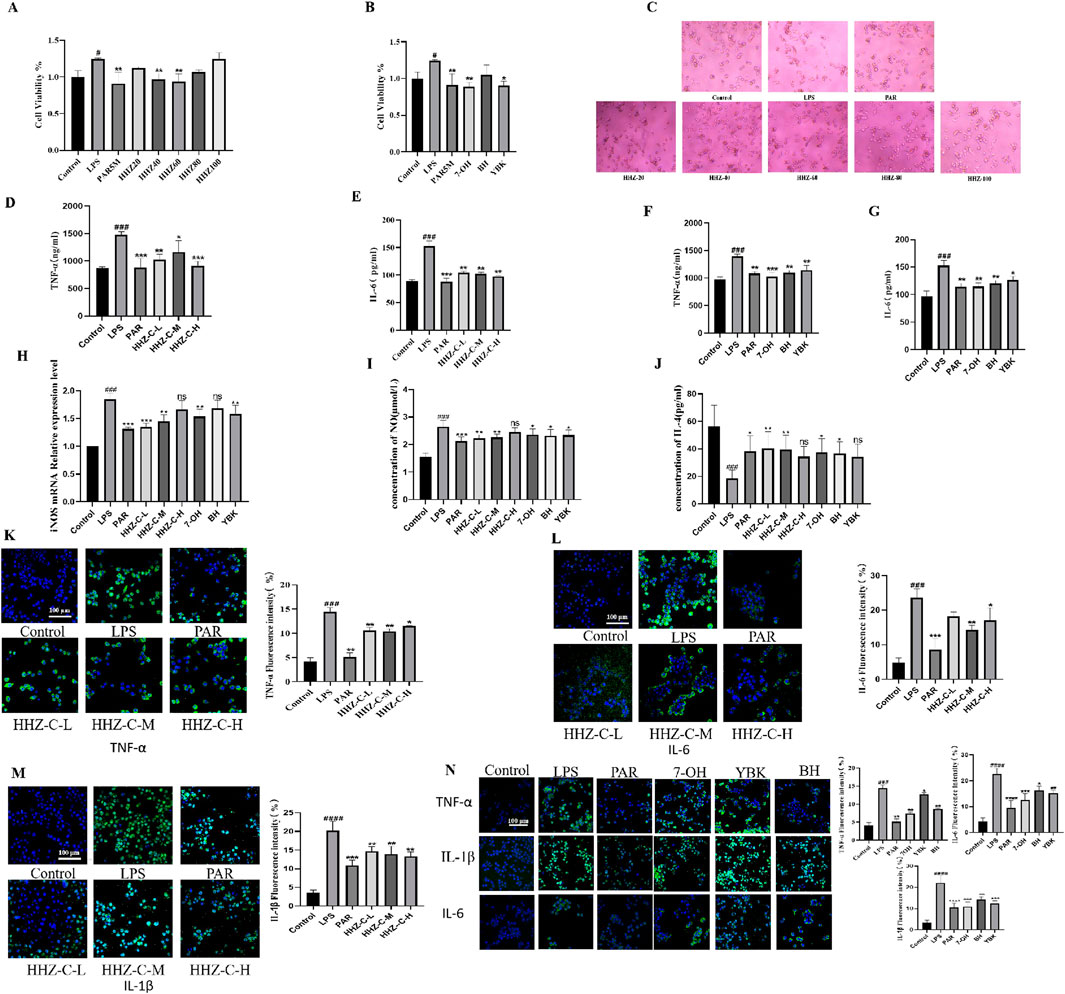- 1Key Laboratory of Evaluation of Traditional Chinese Medicine Efficcacy (Prevention and Treatment of Brain Disease with Mental Disorders), Key Laboratory of Depression Animal Model Based on TCM Syndrome, Jiangxi Administration of Traditional Chinese Medicine, Jiangxi University of Chinese Medicine, Nanchang, China
- 2Jiangxi Guxiang Jinyun Comprehensive Health Industry Co. Ltd., Nanchang, China
A Correction on
Sargassum pallidum reduces inflammation to exert antidepressant effect by regulating intestinal microbiome and ERK1/2/P38 signaling pathway
by Su D, Li Q, Lai X, Song Y, Li H, Ai Z, Zhang Q, Shao W, Yang M and Zhu G (2024). Front. Pharmacol. 15:1424834. doi: 10.3389/fphar.2024.1424834
There was a mistake in Figure 2 as published. The cell morphology images of the “Control group”, “Model group”, and “PAR group” in Figure 2C were accidentally misused due to confusion in the naming of the experimental archive files, using some images from previous studies of the research group under the same experimental conditions. The immunofluorescence images of the “IL-1β Control group” and “IL-6 Control group” in Figure 2N were mistakenly pasted with the same control group image due to file classification errors during image export. The corrected Figure 2 appears below.

Figure 2. Protective effect of HHZ on LPS-induced inflammation in BV2 cells. (A,B) CCK-8 cell viability detection of HHZ extract and its active ingredient. (C) The effect of HHZ extract and LPS on the morphology of BV2 microglial cells (100X). (D–G) ELISA detection of TNF-α and IL-6 levels in BV2 cells. (H–J) After treatment with medicated serum, the expression levels of iNOS, NO, and IL-4 in BV2 cells. (K–N) Immunofluorescence analysis of TNF-α, IL-6, IL-1β. Values represent the mean ± SD. #p < 0.05, ##p < 0.01, ###p < 0.001, ####p < 0.0001 means significant difference compared with the control group; *p < 0.05, **p < 0.01, ***p < 0.001, ****p < 0.0001 means significant difference compared with LPS group.
The original article has been updated.
Generative AI statement
Any alternative text (alt text) provided alongside figures in this article has been generated by Frontiers with the support of artificial intelligence and reasonable efforts have been made to ensure accuracy, including review by the authors wherever possible. If you identify any issues, please contact us.
Publisher’s note
All claims expressed in this article are solely those of the authors and do not necessarily represent those of their affiliated organizations, or those of the publisher, the editors and the reviewers. Any product that may be evaluated in this article, or claim that may be made by its manufacturer, is not guaranteed or endorsed by the publisher.
Keywords: sargassum pallidum, network pharmacology, inflammation, antidepressant, gut microbiota
Citation: Su D, Li Q, Lai X, Song Y, Li H, Ai Z, Zhang Q, Shao W, Yang M and Zhu G (2025) Correction: Sargassum pallidum reduces inflammation to exert antidepressant effect by regulating intestinal microbiome and ERK1/2/P38 signaling pathway. Front. Pharmacol. 16:1653830. doi: 10.3389/fphar.2025.1653830
Received: 25 June 2025; Accepted: 07 October 2025;
Published: 14 October 2025.
Edited and reviewed by:
Karim Hosni, Institut National de Recherche et d'Analyse Physico-Chimique (INRAP), TunisiaCopyright © 2025 Su, Li, Lai, Song, Li, Ai, Zhang, Shao, Yang and Zhu. This is an open-access article distributed under the terms of the Creative Commons Attribution License (CC BY). The use, distribution or reproduction in other forums is permitted, provided the original author(s) and the copyright owner(s) are credited and that the original publication in this journal is cited, in accordance with accepted academic practice. No use, distribution or reproduction is permitted which does not comply with these terms.
*Correspondence: Genhua Zhu, emh1Z2VuaHVhanh6eXlAMTYzLmNvbQ==
†These authors have contributed equally to this work
 Dan Su
Dan Su Qianmin Li1†
Qianmin Li1† Yonggui Song
Yonggui Song Genhua Zhu
Genhua Zhu